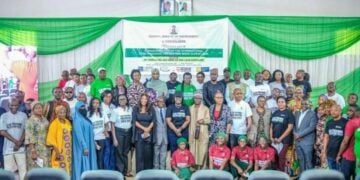UNICEF, in partnership with IHS Nigeria, and the Government of Canada, has officially handed over a state-of-the-art medical oxygen plant and oxygen delivery devices to the Rivers State Government.
The development marked a significant advancement in efforts to enhance maternal, newborn, and child health in Rivers State and across the nation.
The installation of the cutting-edge oxygen plant at Eleme General Hospital in Port Harcourt, Rivers State, follows a comprehensive, nationwide assessment of oxygen needs in health facilities, conducted jointly with the Federal Ministry of Health and CHAI in the 36 states of the federation.
This assessment, the largest of its kind globally, informed the strategic placement of oxygen plants throughout Nigeria.
UNICEF Nigeria’s representative, Cristian Munduate, highlighted the importance of this achievement during the handover ceremony, saying: “The handover of this newly built Oxygen Generation Plant marks a crucial advancement in our mission to supply medical-grade oxygen to healthcare facilities.
“This represents a remarkable step forward in our shared commitment to improving maternal, newborn, and child health in Rivers State and across Nigeria.
“We extend our heartfelt gratitude to the Government of Rivers State for their unwavering support and collaboration. We also express our deepest appreciation to our donors, IHS Nigeria, and the Government of Canada for this partnership.”
CEO of IHS Towers, Mohamad Darwish, emphasised the initiative’s goal to strengthen healthcare services and support the Federal Ministry of Health in meeting the demands for effective oxygen therapy in Nigeria.
High commissioner of Canada to Nigeria, James Christoff, highlighted the crucial role of a reliable medical oxygen supply in treating various health conditions, noting Canada’s pride in partnering on this vital project.
UNICEF expressed confident that the Rivers State Government will maintain and effectively utilise the new plant, especially with its decision to operationalise the facility using a public-private partnership model.
It further expressed its committed to supporting the government through continuous capacity building, provision of technical expertise, and monitoring progress.




